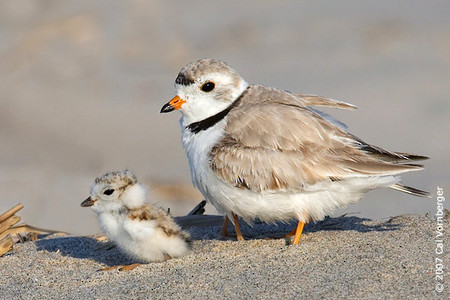Word of the day : ectype : a reproduction, copy
Katrina is 54 today.
What a blissful weekend! A Saturday spent in Beaufort, good shopping at Tanger Outlet malls in Hilton Head Island, Obsessed, a lazy Sunday of football watching (plus a Bengals win and a Jets loss), and, today, a Monday morning playing Stratego with David, and now an afternoon working on my blog and watching a salute to Cary Grant on TCM. Julia and David are in Savannah right now, getting tattoos. Tomorrow morning, we might be getting a new dog. More details to come on that tomorrow.
David and I went and saw Sherlock Holmes: A Game of Shadows on Friday. It was more of the same, not as fresh as the first one, but not much of a slacking-off either. While the relationship, the back-and-forth- affectionate bite between Robert Downey Jr.'s Sherlock and Jude Law's Watson, might lack the humor and sizzle this time around, it's such an appealing, ingratiating twosome that we don't really care. Downey, in particular, hasn't worn out his welcome as Sherlock yet. It's not a logy movie, though Guy Ritchie's staging (or should I say CGI-ing) of the action scenes tends to be a messy jumble, badly blocked, largely incomprehensible. Jared Harris gives good villianry as Moriarty; Noomi Rapace is here too, as is Stephen Fry, both of them adding some color.
Fright Night is a real treat. As remake of the 1985 film, this updating by director Craig Gillespie has Anton Yelchin filling in for William Ragsdale as the teenaged kid suspecting that his neighbor next door (Chris Sarandon then, Colin Farrell now) is a bloodsucker responsible for most of the disappearances in his Las Vegas neighborhood. The film is fabulous, funny and tense, with a particularly memorable, vise-tight sequence when Yelchin's character tries to smuggle a kidnapped girl out of Farrell's apartment. The special effects are fun and the movie is gory without washing the audience's face in it. Toni Collette is underutilized as Yelchin's mother, but it doesn't matter too much with Farrell around. He's a slithery, purring thrill as the sexy, ominous Jerry; the way he greets Yelchin with a "hi, guy" is scarier and more enjoyable than any special effect.
David and I watched A&E's four-hour miniseries adaptation of Stephen King's Bag of Bones, not bad as its type goes. It actually gets more involving as it goes along, as opposed to most of King's novels. Pierce Brosnan isn't exactly who I envision when I think of Mike Noonan, and Brosnan isn't able to bask in his crisp, languid raffishness but, rather, overact - but what else can one do when forced to talk to a moose head and a refrigerator? The film is well-paced, with adequate effects, but King, as ever, is too schematic, the mystery eventually too diagrammed out, with everything falling right into place; there's ultimately less than meets the eye.
Why does Hollywood keep adapting King? There have been about sixty feature-length adaptations, give or take, of King's work. I have seen, believe it or not, twenty-nine of them. The best? The Mist and Misery.
I'm reading Larry McMurtry's Sin Killer and was surprised to find that one of the characters in the novel, a painter named George Catlin, was, in fact, a real-life artist. He was the first painter to portray Plains Indians in their own territories. He journeyed out west five times to do so, creating more than 600 paintings of the American West. Catlin was convinced that the Indian way of life would be wiped out soon, so he wanted to set down their customs and lifestyles on canvas for eternity. Catlin sympathized with the Indians, forced west after the Indian Removal Act, and their struggles to adjust to the hardships of the corrupt frontier. He displayed his paintings along the east coast and Europe, and Catlin himself came to be well-known as an activist for the Indian way of life. He didn't just paint Plains Indians - he also portrayed Cheyenne, Omaha, Mandan, and Blackfeet Indians, among others. Catlin had tried to sell his Indian Gallery (his collection of Indian paintings) to the U.S. government, but couldn't and, heavily in debt, was forced to sell off the Gallery to wealthy industrialist; they are now in the Smithsonian. Catlin was a writer too, although some of his "accounts" of the frontier are believed to be wildly exaggerated.
According to the Georgia Ecological Services Fields Office website, there are four birds with habitats in the state of Georgia right now that are either threatened or endangered:
The piping plover. This threatened small shorebird winters along the coast in expansive mudflats or sandy beaches.
Kirtland's warbler. This bird migrates through Georgia on its way to wintering in the Bahamas. Primarily found in Michigan jack pine forests, it's a small blue-and-yellow bird with black stripes that constantly pumps its tail.
The wood stork. Endangered like the Kirtland's, the wood stork is found in southeast wetlands, nesting in cypress and wooded swamps. Large, white, baled-headed, this is the only stork breeding in the U.S. It breeds in late winter in Florida, when its prey fish is easy to catch because the pools have shrunken.
A red-cockaded woodpecker. Also endangered, the 'pecker is found in mature pine forests. This woodpecker is endemic to the U.S. (a trait rare in itself). A black and white bird, it has a very particular, very specific habitat and this has caused its population decline, as their pine forests have been decimated. A cockade is a ribbon or ornament worn on the head; the male woodpecker has a hard-to-see red one on the side of his head.
Wish us luck on the dog!






No comments:
Post a Comment